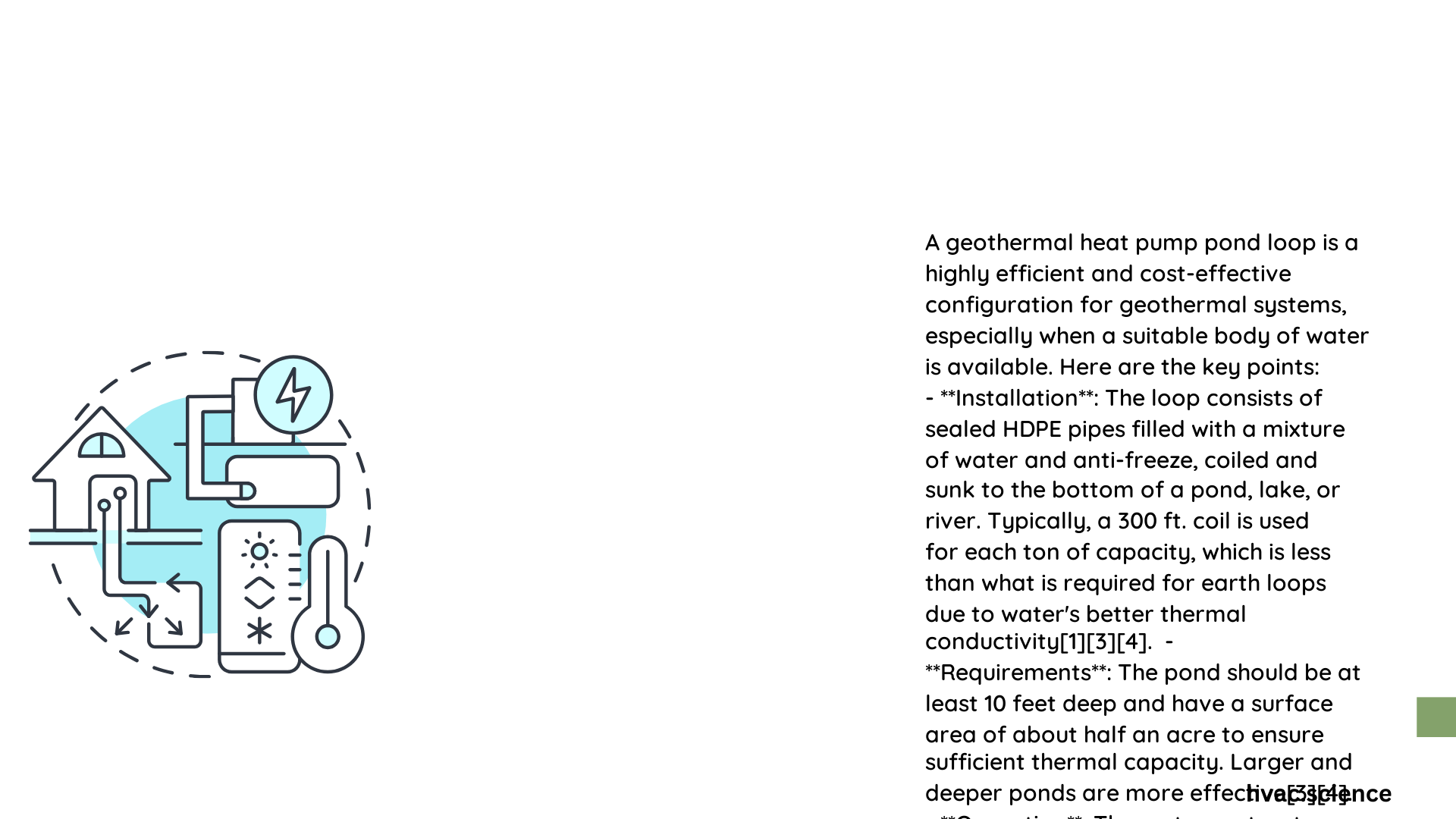Geothermal heat pump pond loops represent an innovative renewable energy solution that harnesses water body thermal properties to efficiently heat and cool residential and commercial spaces. By submerging specialized high-density polyethylene coils in water bodies at least 8 feet deep, these systems extract or dissipate heat through a closed-loop configuration, offering remarkable energy efficiency with coefficients of performance ranging between 3 to 5, significantly reducing traditional energy consumption and environmental impact.
What Makes Geothermal Heat Pump Pond Loops Unique?
Geothermal heat pump pond loops leverage water’s consistent temperature characteristics to provide sustainable heating and cooling solutions. Unlike traditional ground-source systems, pond loops utilize nearby water bodies as thermal exchange mediums, offering distinct advantages in heat transfer efficiency.
How Do Pond Loops Function?
Pond loop systems operate through a sophisticated heat exchange mechanism:
- Thermal Transfer Mechanism
- Specialized HDPE pipes are submerged in water bodies
- Circulating fluid absorbs or releases heat based on seasonal requirements
-
Consistent water temperatures enable stable thermal performance
-
System Components
- High-density polyethylene (HDPE) pipes
- Closed-loop circulation system
- Heat pump unit
- Underground supply line
What Are the Key Installation Requirements?
| Parameter | Specification |
|---|---|
| Pipe Diameter | 3/4 inch |
| Coil Length | 300-350 feet |
| Submersion Depth | Minimum 8 feet |
| Pipe Material | HDPE |
| Warranty | 50 years |
What Performance Metrics Define Pond Loop Efficiency?
Geothermal heat pump pond loops demonstrate exceptional performance through:
- Coefficient of Performance (COP)
- Heating COP: 3 to 5
- Energy transfer ratio of 3-5 units per electrical unit consumed
- Energy Efficiency Ratio (EER)
- Indicates cooling capacity
- Varies based on system design and environmental conditions
How to Ensure Optimal Maintenance?
Maintaining a geothermal heat pump pond loop requires systematic approaches:
- Regular Pressure Testing
- Check pipe integrity
- Detect potential leaks
- System Flushing
- Remove air and debris
- Maintain optimal fluid circulation
- Performance Monitoring
- Annual efficiency assessments
- Seasonal performance evaluation
What Challenges Might Pond Loop Systems Face?
Potential challenges include:
- Water quality variations
- Accessibility for maintenance
- Seasonal temperature fluctuations
- Initial installation complexity
What Are the Environmental Benefits?
Geothermal heat pump pond loops offer significant environmental advantages:
- Reduced carbon emissions
- Minimal ecological disruption
- Renewable energy utilization
- Lower energy consumption compared to traditional HVAC systems
Conclusion

Geothermal heat pump pond loops represent a sophisticated, environmentally friendly heating and cooling solution. By understanding their technical intricacies, installation requirements, and maintenance protocols, property owners can leverage this innovative technology for sustainable energy management.
